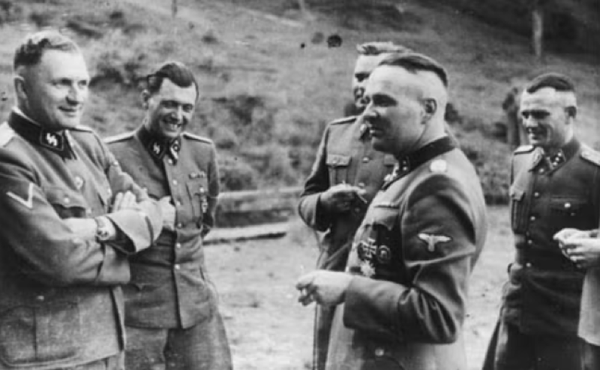Barnum Brown, the man who discovered T. Rex

Barnum Brown was marked for greatness from a young age. Born on a Kansas farm on February 12, 1873, the third child of Clara and William Brown went weeks without a name. Nearby Topeka was plastered with advertisements for P.T. Barnum’s traveling circus at this time, as were cities throughout the Midwest. The colorful posters still loomed large in 6-year-old Frank Brown’s mind when his baby brother arrived. As his parents argued about what to name their new son, Frank offered a suggestion: “Let’s call him Barnum.” Young Barnum’s life bore no resemblance to that of the enterprising circus showman, but he would live up to his name. He showed little interest in farming the family’s property and preferred combing the grounds around his home for fossils. His father ran a modest strip-mining operation on their coal-rich property, and the plows and scrapers unearthed ancient treasures. Corals and seashells littered the landscape. Barnum collected enough fossils to stuff every drawer in the house.
The true story of the president who couldn't hear music
When Ulysses S. Grant was inaugurated for his first presidential term in 1869, thousands of people showed up to celebrate. It was one of the grandest and swankiest parties held in generations, and naturally included lots of music, mostly parade-marching tunes that set the tone of the event. Yet one person who did not enjoy the sound of the beat was the incoming president himself. There's a famous line attributed to the acclaimed Civil War general: "I know of only two tunes: one of them is Yankee Doodle Dandy, and the other isn't." Underneath the joke was a real neurological condition that Grant had, although he never knew it. This disorder also would also afflict at least two other future presidents, Theodore Roosevelt and William H. Taft. It is known as "congenital amusia," or an inability to hear music and understand it as — well — music. To those with the condition, music typically sounds cacophonous, like noise.

Vivian Bale, the woman who rode a motorcycle around the US in 1929
She was featured on the cover of the November and December 1929 issues of the Enthusiast™ magazine. Arthur Davidson called her “The Georgia Peach.” And newspapers across the country were hailing “The Enthusiast Girl”. Yet today, few people know who Vivian Bales was. She was born in January 1908 in Wacissa, Florida, and in high school she organized a charity event and earned $300, which was a lot of money at the time. And she thought: why continue to travel around town on her family’s horse when she could cover more territory on a motorcycle? After becoming comfortable on her new Harley-Davidson, she wrote to wrote to Hap Jameson, editor of the Enthusiast magazine, telling him that she’d like to make a solo trip north on her bike to visit the factory in Milwaukee. In all, she traveled for 78 days and covered nearly 5,000 miles. Following her ride, Bales performed stunt riding at motorcycle races in Tallahassee, Florida.

Radio signal detected from alien planet, prompting hope in search for life
A “coherent” radio signal has been detected from an alien planet, suggesting it could be more likely to be habitable. The signal suggests that the planet has its own magnetic field, which is thought to be central to sustaining life on a particular world. On Earth, our magnetic field helps protect us from the high energy particles and plasma that are blasted from the Sun. As such, any alien life is likely to depend on being protected by a similar field. But until now researchers have struggled to confirm whether distant rocky planets have magnetic fields of their own, and therefore have found it difficult to say how likely a planet might be to able to support life. Now the new candidate – YZ Ceti b, a rocky planet that orbits a star about 12 light years away – has sent a repeating radio signal that comes from the star and seems to be affected by the planet.

How the Fosbury Flop changed athletes' bodies
High-jumping legend Dick Fosbury won the Olympic gold medal in 1968, but is better known for an innovation that changed the sport: the “Fosbury flop,” i.e. going over the bar backward. Fosbury’s innovative technique makes perfect physics sense. By arching his back and curling his legs around the bar, his center of mass could pass under the bar, while his body passed over it. Thus, he didn’t need to jump as high to clear the bar. Fosbury was warned against it by some coaches who felt it wouldn’t work, and that he’d probably get hurt. But the older methods of high-jumping hadn’t been working well for him, so he experimented. Fosbury wasn’t thinking about the physics; he was just searching for something that felt like it would allow him to more easily get his butt away from the bar. There’s a lesson here about problem solving in sports, and probably well beyond.

The woman who invented the first automatic dishwasher
Josephine Cochrane, inventor of the first commercially successful dishwashing machine, was born in Ashtabula County, Ohio in 1839. She and her husband William often entertained guests at their home, and she was frustrated by how her fine china often chipped when washed in the sink. Working in a shed behind her home, Cochrane got to work. She measured the dishes and constructed wire compartments to fit plates, cups, and saucers, and placed these inside a wheel that laid flat within a copper boiler. The wheel turned, powered by a motor, and soapy water would squirt up over the dishes to clean them. In 1886, she patented her design and began making them for friends, calling the machine the “Cochrane Dishwasher.” She also advertised the machines in local newspapers. She established Cochran’s Crescent Washing Machine Company, and soon restaurants and hotels became interested. In 1893, Cochrane presented her machine at the Chicago World’s Fair, where she won an award for its design and durability.

Cat jumps on Imam during prayers and he just rolls with it
Cat jumps on Imam during qiyam (taraweeh) prayers and he behaves exactly like any imam Insha’Allah would.#Ramadan pic.twitter.com/QHGXSgiZgK
— Alateeqi العتيقي (@BinImad) April 4, 2023

